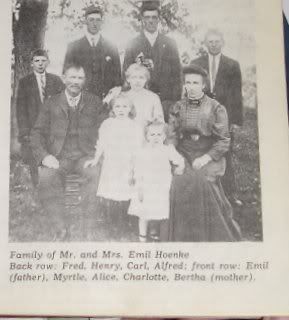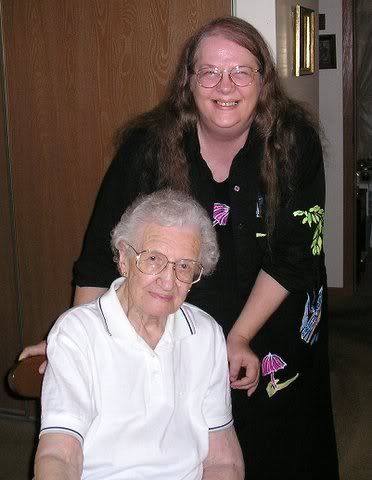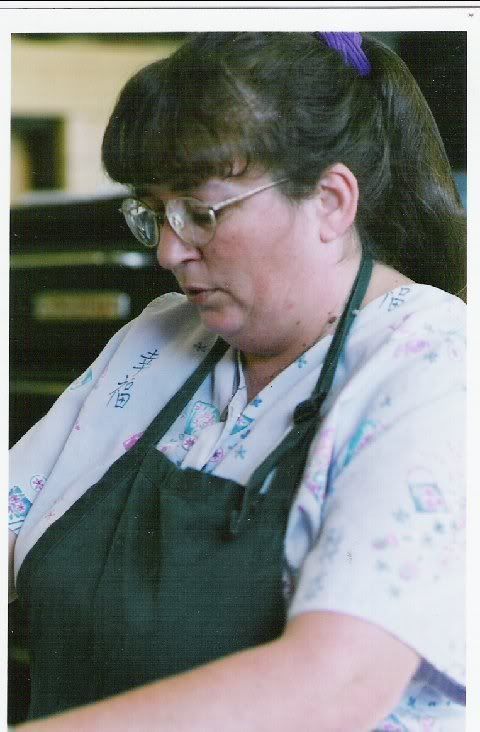Like the Little Engine who thought he could ...
Ok, that was a false alarm. I thought I was going to work, but apparently I am not really going to work. When push came to shove … I couldn’t go through with it. I’ve got that problem about me. Mostly, I think it is because I am having a hard time leaving my personal space where I can work on school unencumbered. I had just posted my stuff, but I finished it too quickly last night as our friend got here early and then this morning there wasn’t time … and I haven’t even really looked over the material all together. PLUS, we have nagging at us there are now four small assignments due. Again, we’ve done the reading for two, but the other. I’d like to get some paper writing done today … before our Dr. Marvin appointment …. NOOOOOO we can’t dismiss that!Sheesh … ok, ok … just thinking is all.
I’d like to work on the paper more, but I don’t think that time will justify that. There’s this nagging thing though that wants to check out the difficulty rating of pulling paragraphs together.
Let’s see. Ok, this is it … for the moment … we would like to get to the next session, but the first rough draft is in!!!
Start Paper Thinking here…
Festinger developed social comparison theory (Buunk, 1990; Gump, 1997; Klein, 1997; Kruglanski, 1990; Kwan, 2004) which stated that to gain self knowledge; people are driven to comparing themselves to others’ opinions and skills. Later, theorists would add that people compare emotional intensity as well (Buunk, 1990, p. 1238). Festinger knew that information gained in social comparison provided diagnostic value to the recipient in that comparisons could be used to assess or evaluate one’s performance (Gibbons, 1994, p. 638).
If I wanted to know how good a cross-country skier I was, objectively I would compare the results of a meet where I had raced against other skiers. A subjective evaluation would be to prepare for a race by comparing how well a “target” skier skied against other people I had raced. Next, I might compare information by asking my coach’s opinion. “What are my chances in the upcoming race? What should I be doing?” And last, by comparing emotions, I might evaluate my butterfly feelings of race-day anticipation next to how calmly I perceived my competition to look. The diagnostic value of each of these examples would be for me to plan to compete well.
Another concept presented by Festinger was that we affiliate with others to comprehend our normalcy (Davison, 2000, p. 205). We want to know if we are within reason of each other. If I want to check my appearance, I would look at how my peers dress and then I would make my clothing choices estimating whether or not my choices seemed acceptable. And, by affiliating with others, I can gauge how I should be thinking or feeling toward things (p. 205), so in the above example I might find from my peers the best store to shop, or conclude they are not concerned with dress and I could stand at ease. In an unsure situation of higher anxiety, perhaps a community meeting, I might make the right impression by comparing myself more broadly to professionals outside my organization.
Most often with social comparison, we don't need to think about making comparisons because the process is automatic, spontaneous, and unintentional (Heine, 2002, p. 904). We can control comparison-making with conscious effort, or just let it happen. Festinger considered that our comparisons are not context free; we are in relation to our orientation (p. 904). I might think my dress is fine for the south side of Chicago, but if I worked in the Chicago loop for a big legal agency on the 54th floor of the Sear’s building, my concept or reference point might be different.
Social comparison also assists us in defining and clarifying task parameters (Butler, 1992, p. 934). If I wanted to write a good paper, I might look to another good paper to discern expectations. This process would assist me in making goals so that I might eventually master the task of paper writing. A current example of clarifying parameters is to look toward self-help groups (Davison, 2000, p. 206) that are available on daytime TV or other. Through comparison of others similar to us, we could find ourselves challenged by its sometimes powerful sense of collective wisdom. Unlike professional supports, support groups are often cost efficient and less complicated due to lesser varying degrees of professional structure or assumption (p. 206). The boundaries are more porous.
This learner is particularly drawn to on-line support groups due to the relative sense of aloneness in having dissociative identity disorder. Multiplicity is a controversial condition even to professional psychologists and psychiatrists, but many multiples find acceptance by meeting with other multiples across the country. During group sessions comparisons are made by listening to the ideas on work, marriage, medicine, therapy, economy, etc. This learner does not know other multiples face-to-face, but finds an understanding of selves in comparison to others by provision or scope of sharing with others’ general life progress.
In establishing self-enhancement as an essential component of social comparison, Festinger stated that self-enhancer’s perceived self as more positive than they perceive others (Kwan, 2004, p. 94). Self-enhancement bias is the discrepancy in accuracy between the positive self-perception and in the perception of others (Butler, 1995 Kwan, 2004). Potentially in my view, I would think myself the better skier than I thought of most my peers. I would never say this to my peers, because they would then want to show me how wrong I was. Everyone has some need to feel they are at least a little better than average.
A few years later, Allport (as cited in Kwan, 2004, p. 96) contributed self-insight theory to Festinger’s work, in that not only did self-enhancers perceive themselves more positively, but that others perceived the self-enhancer as being less positive. So, most likely the other skier thought poorer of me than I had, which if I had known, might have fueled her competiveness or mine. In summary then, there are three essential components of social comparison: self-perception, perception of others, and perception by others (p. 96).
Self-evaluation leads people to making comparisons that reach upward or downward to various levels of self-benefit. For example, we can restore a sense of self-esteem by making a downward comparison. This could occur by looking to the guy with less ability or talent. Or one might make an upward comparison, and be challenged toward advancement by the others’ success (Buunk 1990, p. 1239). Social comparison theory states that we can learn from our observations, which helps us to improve our products or performance, or enhance our coping ability; we can be guided to self-improvement (Butler, 1995, p. 347).
When people look upward and stay positive they often get better or do more (Buunk, 1990, p. 1239). Before an important meeting one might recall a previous meeting experience where things were well-ordered and constructive. Imagining the door opening to the conference room, there is a sense of happiness. With presentation tucked under arm one has a sense of awareness and feeling of self-control. You believe the meeting is going to go well and you have the clarity to hold everything in place. In general, if you wish for self-improvement and look upward in your comparisons, you stand more likely to gain from its potential (e.g. Arrowood & Friend, 1969; Gruder, 1971; Suls & Tesch, 1978; Wheeler, 1966; Wilson & Benner, 1971 as cited in Blanton, 1999, p. 420).
If there were a chance of responding to a neighbor’s threat – new car in their driveway with new car in your driveway -- you could continue to look safely upward (Gibbons, 1994, Blanton, 1999, p. 420). You might note the local convenience store clerk was looking exceptionally happy. In contrast, the basic “target principle” of downward comparison theory is “subjective well-being can be enhanced through comparison with others who are thought to be worse off” (Blanton, 1999; Gibbons, 2002, p. 865). Backing out of the store, we might feel grateful we aren’t the one in the van delivering potato chips on a Saturday morning. We balance our sense of well-being and feel better when it is on the upside (Buunk, 1990, p. 1239).
Looking upward is good for self-evaluations, however if there is negativity and one considers himself inferior to the next guy, looking upward will not help the cause (Buunk, 1990), p. 1239). “Relative depravation” is when people are unhappy because they cannot “keep up with the Jones’s” (e.g. Bernstein & Crosby, 1980 as cited in Klein, 1997, p. 764). If we didn’t get the new car, looking over at that new car in the neighbor’s driveway will leave us feeling deflated, especially without that foreseen raise.
To boost our positive emotions or to protect our sense of self-esteem, a downward comparison may be important. Self-esteem is worth protecting because it is a means of buffering depression (Corning, 2002, p. 123). Looking over at the other neighbor’s rusty truck might help to reduce our feelings of anxiety (Buunk, 1990, p. 1238). But, although Buunk states (p. 1238) that people compare downward during times of threat to “generate feelings of self-enhancement, ” Suls and Wheeler (2000b as cited in Gibbons, 2002, p. 866) state firmly after 40 years of research that “there [was] is no experimental evidence demonstrating downward comparison under threat.”
They also found people avoided upward comparison under threat, but that didn’t mean that people looked downward. Gibbons (2002, p. 878) suggests that downward comparisons happens after the threat is over. After the fire was put out, I might be more upset (feel the worst of the situation) with my friend to learn he had been smoking in bed. Downward comparison has three underlying motives self-enhancement, self-evaluation, and self-improvement (Gibbons, 2002, p. 865).
Our mothers taught us to clean our rooms, “So it didn’t look like we lived in a pig-sty.” We could agree, “No that’s not the way I want to live.” If I’m feeling glad it’s not me that owns the rusty truck, there might be a better chance that after thinking things over, I feel like straightening the garage, cutting the grass, or having a basketball game with my son. If I need motivation to improve or enhance my situation, it would be natural to look downward (e.g., Friend & Gilbert, 1973; Hakmiller, 1966; Pyszczumski, Greenbert, & Laprelle, 1985 as cited in Blanton, 1999, p. 420).
Within Groups and Between Groups
















